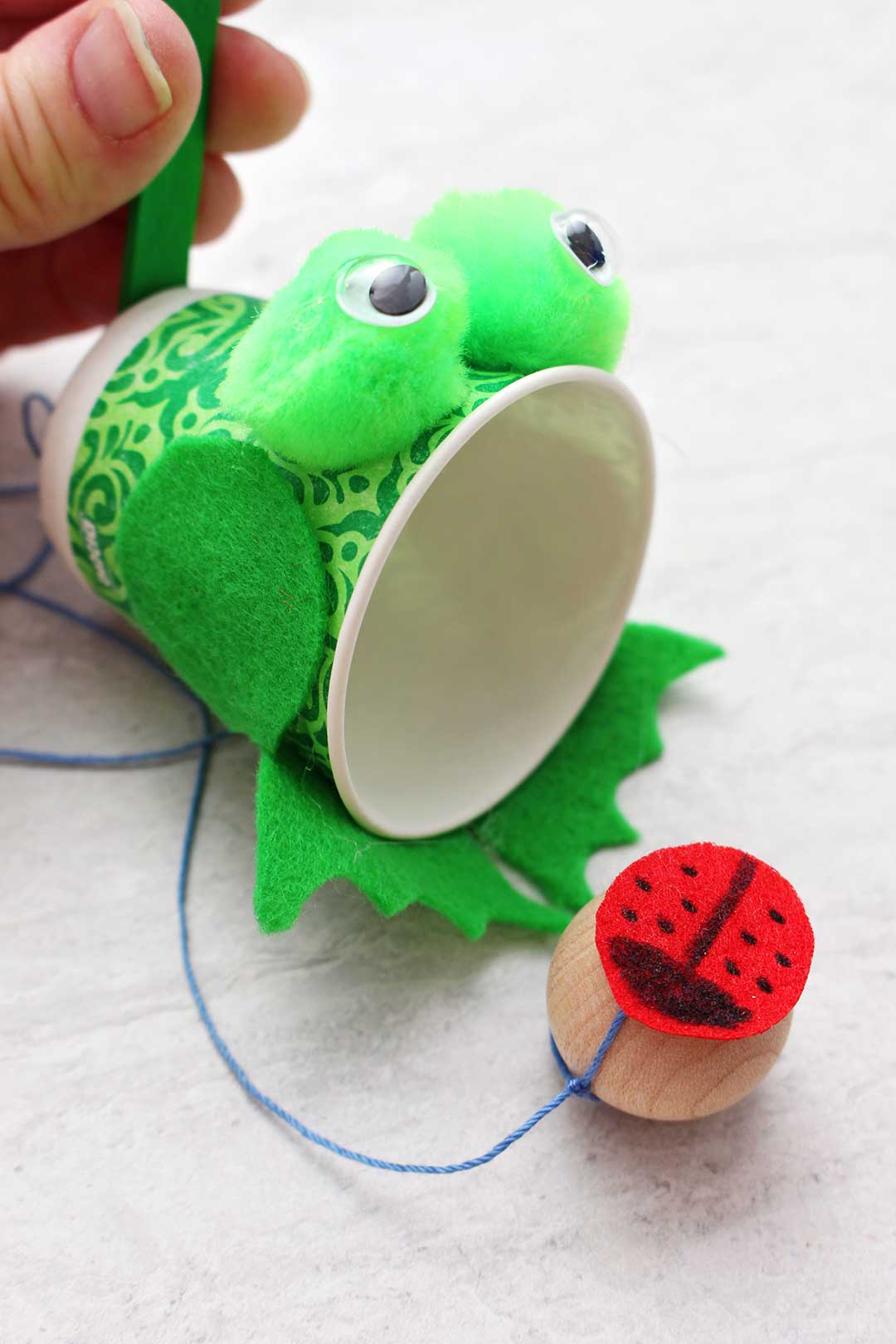Unlock Endless Fun with the Classic Ball and Cup Game!
Hey there, awesome parents! Are you on the hunt for a delightfully simple, yet surprisingly captivating game to share with your kiddos? Look no further because the Ball and Cup Game is here to sprinkle some joy into your family time! This age-old game, known for its straightforward design and endless hours of entertainment, is a wonderful way to develop hand-eye coordination and fine motor skills in children. Let’s embark on a playful journey to master the twists and turns of this traditional game together!
What Is the Ball and Cup Game?
For those new to this classic toy, the ball and cup game is as charmingly uncomplicated as it sounds. It consists of a wooden cup with a handle, a ball typically attached by a string, and the goal? Simply to swing the ball up and catch it in the cup. But don’t be fooled by its simplicity – it can be quite the challenge, and oh-so-addictive once you get the hang of it!
The History of Ball and Cup
The ball and cup game comes from a storied past, believed to have originated hundreds of years ago. While its exact origins are somewhat of a mystery, variations of the game have been enjoyed worldwide, making it a universal treasure in the toy chest of history.
Benefits of Playing the Ball and Cup Game
Aside from the sheer fun factor, this humble game packs a punch of developmental benefits for children:
- Improves Focus: As kids concentrate to catch the ball, their attention span gets a healthy workout.
- Enhances Motor Skills: Coordinating the hand and eye to achieve a successful catch helps refine motor skills and agility.
- Boosts Patience and Perseverance: This game is a playful teacher of persistence—it might take several tries, but the success is oh-so-satisfying!
- Portable and Screen-Free: In a world full of digital distractions, the ball and cup game is a refreshing way to enjoy unplugged playtime anywhere.
Choosing the Right Ball and Cup Game for Your Child
When selecting a ball and cup toy, consider a few things to ensure the best experience for your child:
- Material Quality: Wooden ball and cups are classic, durable, and environmentally friendly. Plastic models can also be great, especially for younger children.
- String Length: Look for a string that’s not too long or too short—it should ideally allow the ball to reach the cup without too much slack.
- Safety: Ensure that all parts of the game are securely attached and that the toy is free from small parts that could pose a choking hazard for little ones.
- Age Appropriateness: Consider the age of your child and their ability to handle and manipulate the toy for successful play.
Step-by-Step: How to Play the Ball and Cup Game
Ready to get started? Here’s a quick guide on teaching your child how to play this amusing game:
- Hold the Cup: Grip the cup’s handle firmly with your dominant hand, letting the ball hang down.
- Swing the Ball: Flick your wrist to swing the ball upward towards the cup.
- Catch it!: Time your cup’s opening to meet the ball as it reaches the height of its swing and capture it inside the cup.
- Practice and Patience: Encourage your child to keep trying, as it usually takes several attempts to land their first catch. Celebrate each success to keep the momentum going!
As your child becomes more adept at playing, they might start creating their own versions of the game or challenging themselves to achieve multiple catches in a row. It’s all part of the fun and creativity that the ball and cup game inspires!
Now that you’ve got a grasp on the basics, let’s dive deeper and explore some creative ways to play and learn with the ball and cup game. You’ll discover that this seemingly simple activity is not just a game but an opportunity for growth, laughter, and quality time with your children. Let’s keep the ball rolling!

5 Things Parents Should Know in Preparing for the Ball and Cup Game
Here are five essential tips to create the best playing experience for your child:
- Choose the Ideal Environment: Find a space that’s free from distractions and safe for your child. Playing outdoors can add an extra fun element, and having a clear area indoors is perfect for times when the weather isn’t cooperating. Ensure the playing surface isn’t too slippery and has enough light for your child to see the cup and ball clearly.
- Start with Demonstrations: Before diving in, show your child how the game is played. Kids learn quickly by observing, so give them a live demonstration. Explain the motion needed to swing the ball and how to adjust their technique if they miss. This will give them a clear idea of what to aim for as they play.
- Adjust to Fit the Child’s Skills: If your child is finding it difficult to catch the ball in the cup, consider starting with a larger cup or a lighter ball. As they improve, you can switch back to the standard size to keep challenging their developing skills.
- Include Variations for Sustained Interest: To keep the game fresh and engaging, introduce variations. For example, have your child try catching the ball with their non-dominant hand, or set a timer to see how many successful catches they can make within a set time period. Creativity is key to keeping the game enjoyable and exciting.
- Encourage Group Play and Social Interaction: While this game is often played solo, it can also be a great way to foster interaction with friends or family members. Organize small competitions or pass the cup after each turn to involve everyone. This not only adds a sense of camaraderie but also helps children learn to share and take turns.
Remember, preparing for the ball and cup game isn’t just about having the right toy—it’s also about creating the right atmosphere and adjusting the game to fit the needs of your child. With these tips, you’re ready to make playing the ball and cup game a cherished part of your family’s playtime repertoire.
Advanced Tricks and Challenges
Once your child has mastered the basic ball and cup game, they might be eager for more challenges. Here are a few advanced tricks and game variations to keep the excitement alive:
- Around the World: Have your child try to catch the ball on the rim of the cup, then quickly flick it up and around the outside of the cup to catch it inside.
- The Bounce Off: Introduce a small, soft surface for the child to bounce the ball off before catching it in the cup.
- Double Trouble: If you have two ball and cup toys, challenge your child to use both at the same time, one in each hand!
- Blindfolded Fun: With a blindfold on, the game becomes a test of spatial awareness as the player relies on memory and a sense of direction to catch the ball.
- Record Breaker: See how many successful catches your child can achieve in a row, and keep track of their personal best for a bit of friendly competition.
Games like the ball and cup offer more than just play; they weave magic into everyday moments, transforming them into treasured family memories. And by encouraging kids to push their limits with these advanced tricks and challenges, you help foster a love for learning and growth.
There’s something incredibly special about sharing timeless toys like the ball and cup game with your children. It’s about the laughter, the high-fives, the little jumps of victory, and the loving encouragement after each miss. It’s those moments, fueled by simple fun and togetherness, that truly make the ball and cup game a must-have in every family’s collection of playtime activities.
Dive into the captivating, skillful world of the ball and cup game and watch as your children shine with delight and confidence with every successful catch. Happy playing!
See more great Things to Do with Kids in New Zealand here. For more information see here
Disclaimer
The articles available via our website provide general information only and we strongly urge readers to exercise caution and conduct their own thorough research and fact-checking. The information presented should not be taken as absolute truth, and, to the maximum extent permitted by law, we will not be held liable for any inaccuracies or errors in the content. It is essential for individuals to independently verify and validate the information before making any decisions or taking any actions based on the articles.




